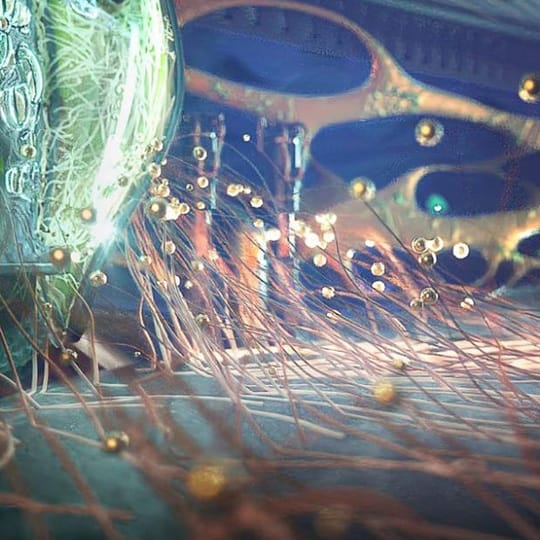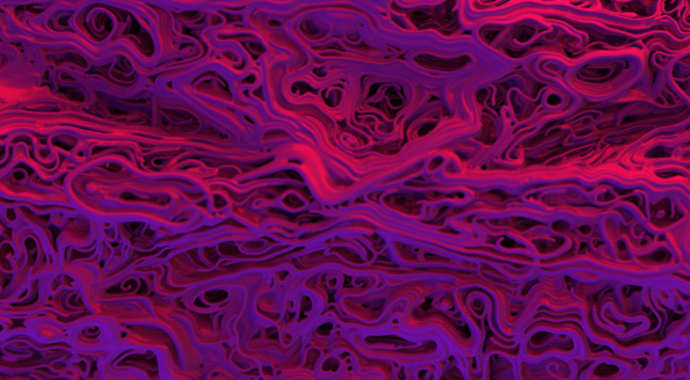DesignMorphine graduates share their incredible master thesis projects and tell us how V-Ray and its features have become crucial parts of their design workflow.
In our previous interview with DesignMorphine, we gave you an inside look into the academy’s Master of Science in Computational and Advanced Design program in collaboration with the UACEG. We discussed how V-Ray is integrated into the curriculum.
This time, we’re introducing you to the academy’s recent master’s graduates and presenting their thesis projects, and Design Morphine’s CEO Tsvetelina Georgieva also gives us some insight into their Media Lab. The academic leads of this year's Media Lab were V-Ray's 3D artist and educator Yavor Stoykov who focused on rendering essentials and Vittorio Bonapace on post production. We hope you’re inspired as much as we were. Here is part one of the two-part interview.
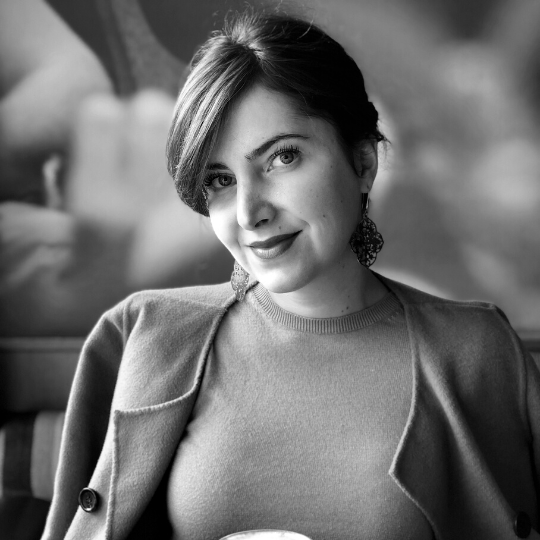
What exactly is the Media Lab?
The Media Lab is an essential part of DesignMorphine’s Master’s Degree. In the course, students get the necessary visualization and graphics skills needed for a successful career in the design industry by working on their own projects that aim to push the boundaries of the visual world. The lab has two phases that complement each other. During the first one, students learn how to produce high-quality renderings using V-Ray for Maya, Rhino, and Grasshopper. The second phase focuses on teaching post-production techniques, composition and layout in Photoshop.
Tsvetelina Georgieva, Architect, Co-Founder and CEO of DesignMorphine
What benefits does the course offer students?
During the Media Lab, students learn advanced skills and techniques that dramatically improve their design workflow and are easy to implement in future projects. We also aim to teach students powerful presentation skills that are critical for developing effective communication with clients.
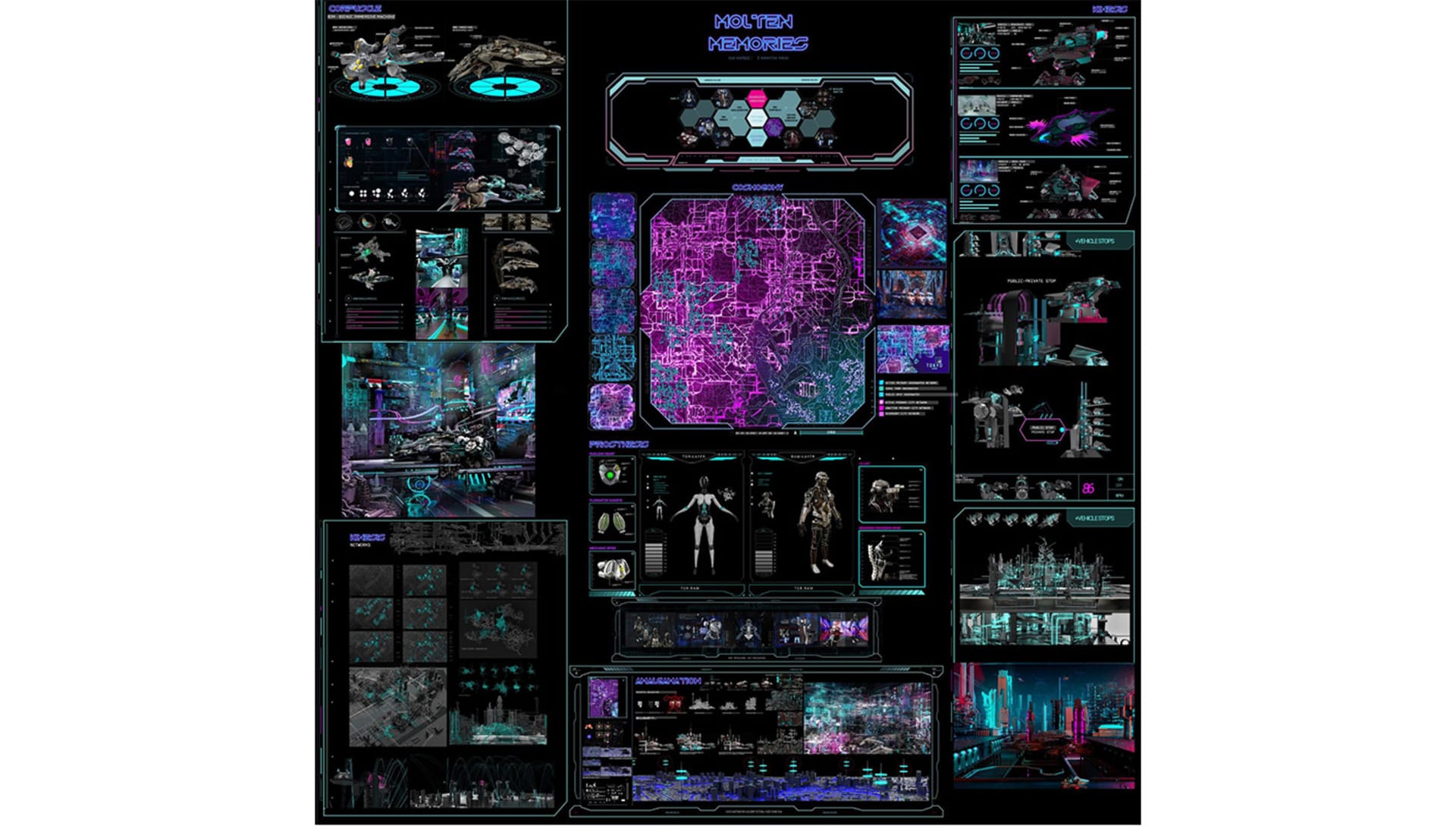
What is the story behind the Molten Memories?
As humans, we constantly generate memories throughout the course of our life. My partner Eva and I wanted to design a world where we can extract those memories from humans and use them to design the Molten Memories world. The world's design reflects the fundamental idea that memories serve as a constant stream of data — a rigorous flow of the feelings and perceptions from humans without filter.
Is the future happy and bright or something that we should be anxious about?
Eva and I believe in a future with a mix of darkness and brightness. We must ask ourselves, can we appreciate all the good in the world without bearing witness to the bad?
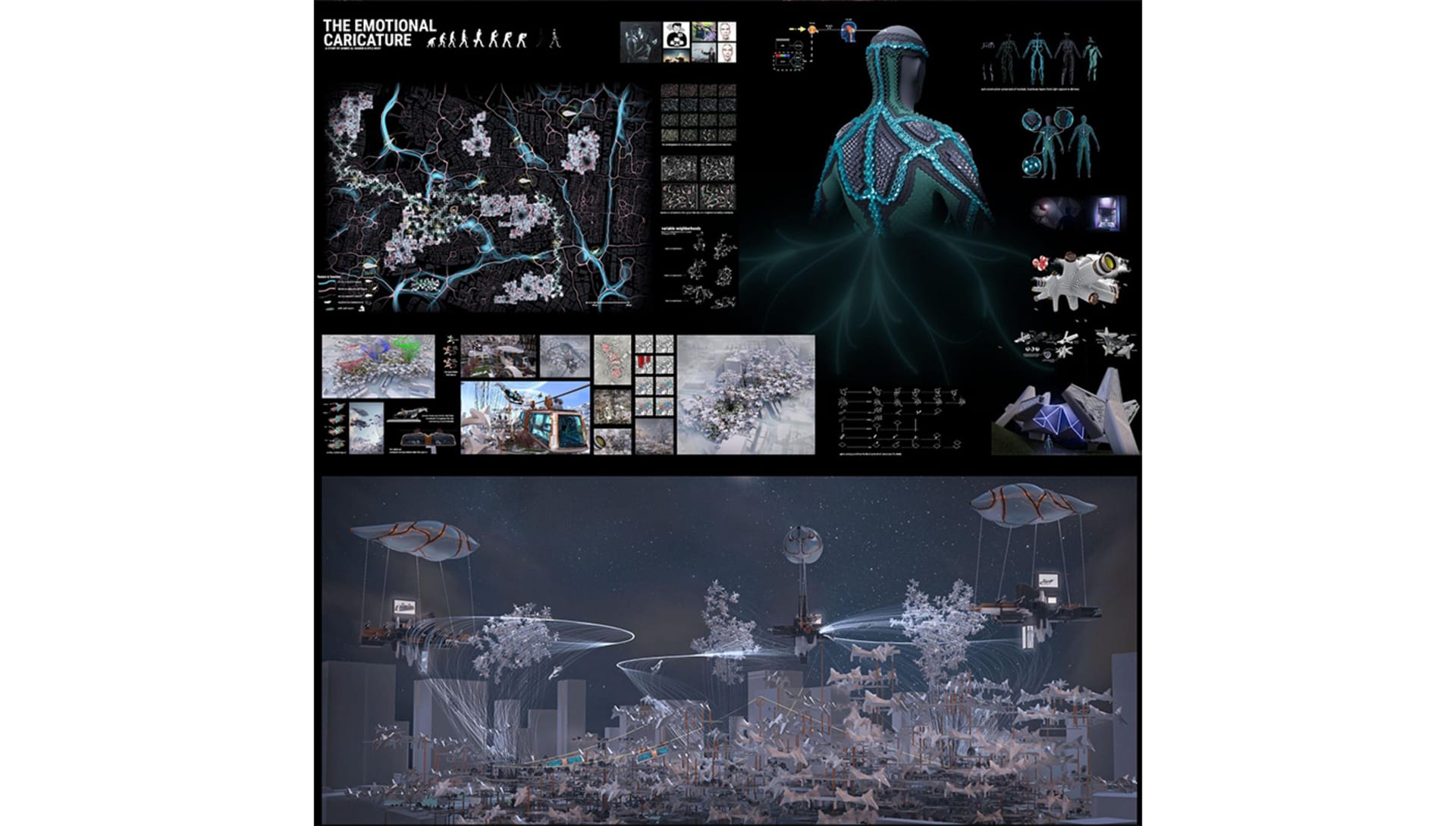
What part of your project was your favorite and why?
The most exciting part of the project was the visualization process after all the hard work of exploring forms and modeling, especially during chapters 3 and 4 of the master’s program. During those academic phases, we had the chance to extend our concept of making an eye-catching product starting from a simple mass.
How did you integrate V-Ray into your workflow?
V-Ray was a very useful rendering software throughout the entire master’s program. Other than using it as our main render engine, we also relied on features such as V-Ray Scatter to scatter geometry. In Chapter 3 - Amalgamation, we had a large, complex arrangement of parts and wanted to populate trees and landscape modules efficiently without additional scripting in Grasshopper, so the scatter tool was beneficial.
How did you achieve such intricate details in the skin of the creature?
The amount of details in the creature were born out of functionality. The prosthetic suit is designed to capture light from its environment through an array of lenses, and ultimately transmit that light back to the user’s head. It’s through this functionality that a variety of materials were used in the suit’s construction, and in visualizing the final images we carefully adjusted colors and lighting to achieve the look.
What are the different features and functions displayed on the map?
The functions here refer to the transportation networks and the aggregated habitats across a new city built within an old city. The new way of living within this new world prioritizes time and space to connect through shared spaces, experiences, and emotions.
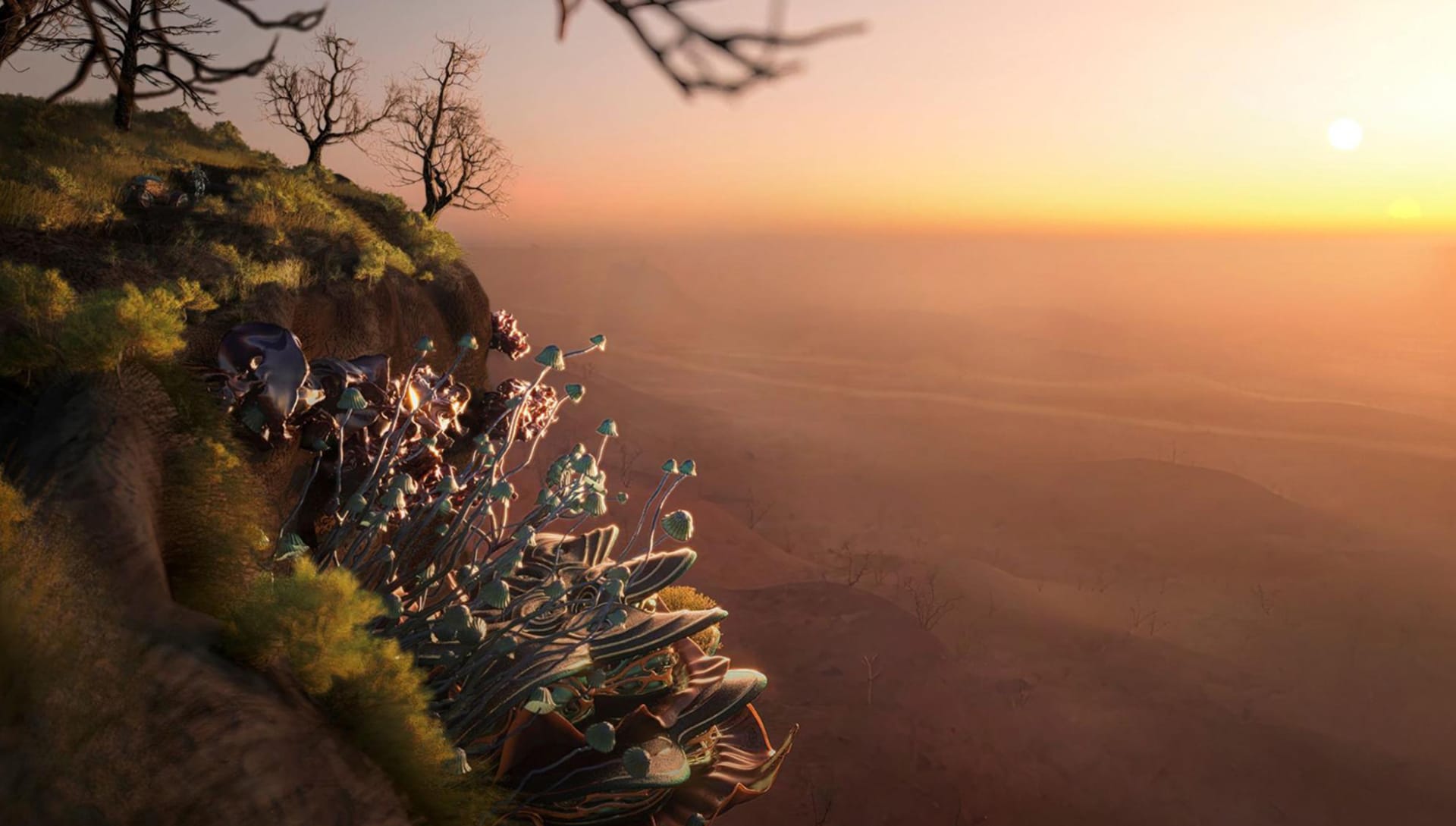
The lighting is very impressive in this render. What stages were involved in creating it? And what mood does it convey?
The concept behind “the unage” began with moodboard images of barren deserts as this project is a rehabilitation of uninhabitable areas. After placing the necessary assets, camera angles were established. Lastly, to achieve the desired sunset look, an aerial perspective element with a V-Ray Sun was included.
The plants appear to thrive in a very warm and sunny environment. Can you tell us how you went about creating them?
Aside from creating assets with warm green tones, material ID passes and object ID passes were used to isolate the plants and later on bring out their color in post-processing.
What did you find most challenging in the creation process? How did V-Ray help?
One of the most challenging parts, which was previously more difficult to achieve, was balancing the lights in the scene. Each light change meant a new render. With the LightMix element and the viewport IPR, lookdev and tweaking of lights to fit the concept has never been easier.
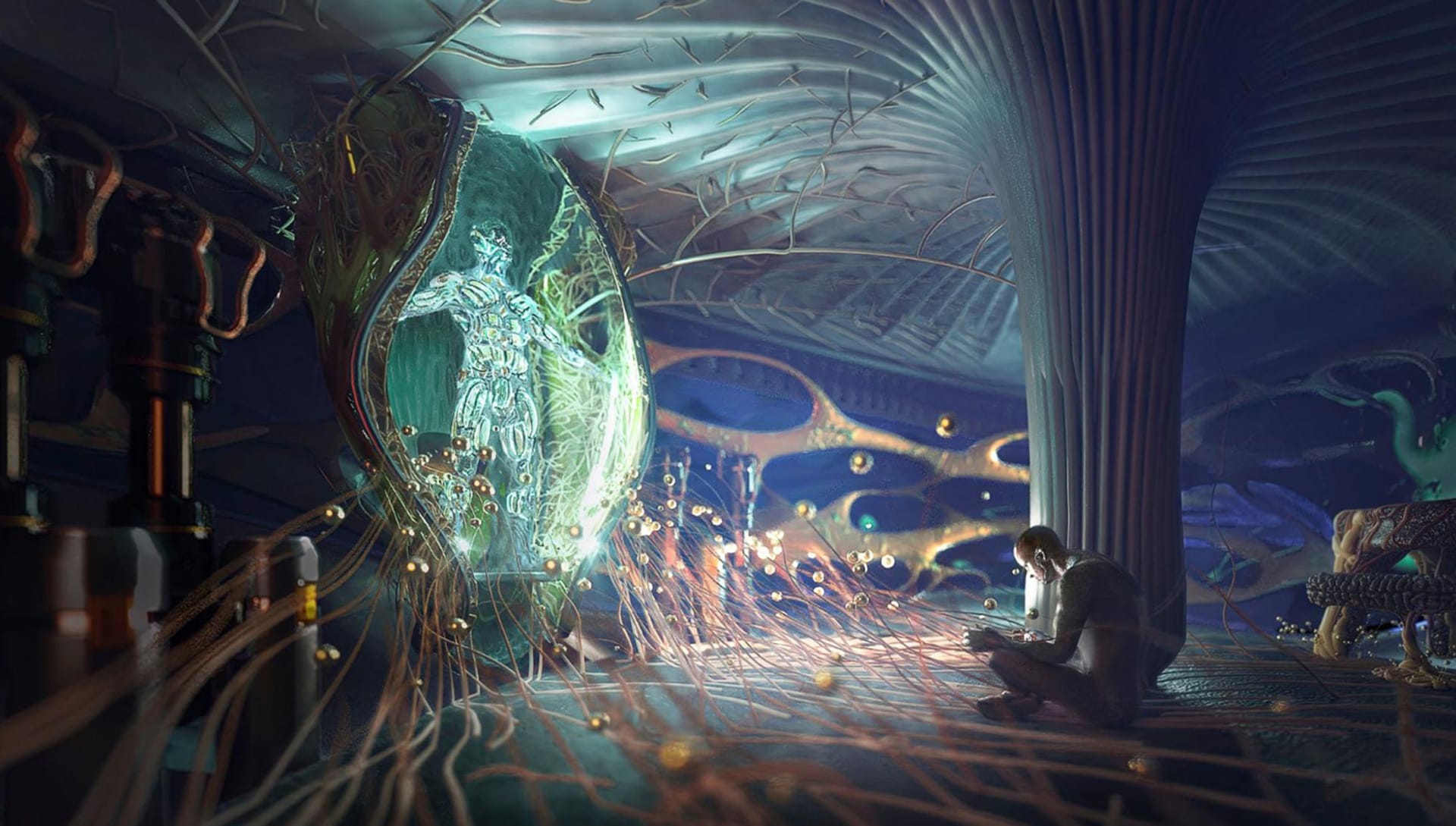
What is the role of the person in this render?
The person is a scout and scientist tasked with establishing ground zero at a planned organic community development on an uninhabitable land.
What are the faucets on the left connected to? Do they keep the caged plant man alive?
The figure in the pod is the scientist’s organic exosuit being grown. This suit is molting, self-sustaining, and enhancing, which helps the scientist traverse long distances through harsh environments.
What V-Ray features did you use in creating the scene?
V-Ray Denoiser, Lens effects, LightMix, Material and Object ID passes, and environment fog.
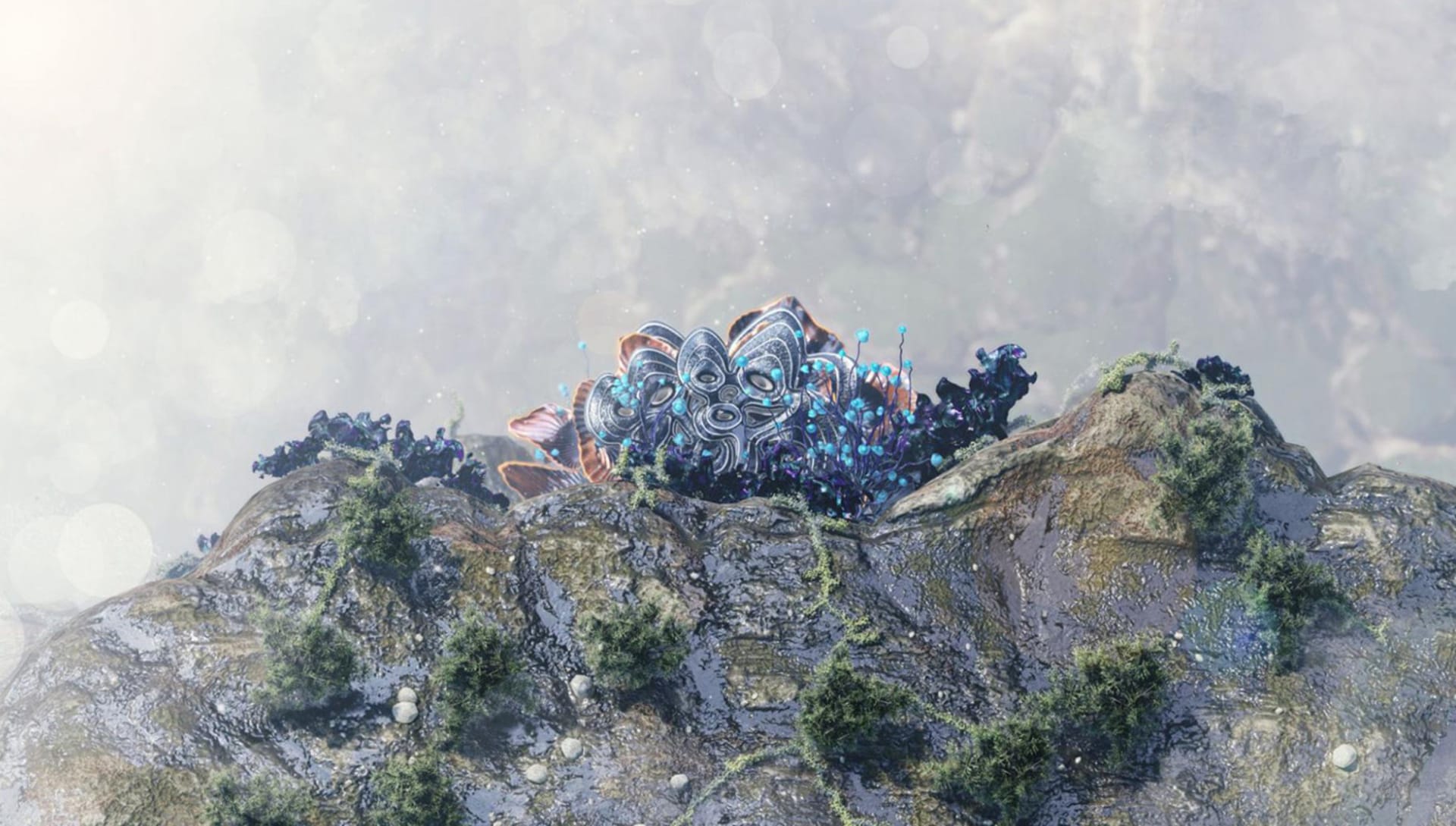
Please introduce yourself in a couple of sentences.
I’m Mohammad Qamar, an architect and Procedural Designer from Oman. As a designer, nature greatly inspires my studies and design endeavors. I enjoy researching intricate patterns and formations that occur within various natural processes. I genuinely believe that our environment – from the cosmos down to the tiny microorganisms that surround us – holds vital information and secrets that, once accessed, could unlock unbelievable possibilities in all facets of human life.
The main figure looks like a very fragile sea creature that has crawled on top of a cliff. Did it come from your imagination?
Yes, a fascinating take on the image. I always see nature as a source of inspiration for all my compositions. The idea was to create this metaphoric beacon of hope for the environment. The Oasis seed nourishes everything while the foreground is seen as drylands yet to be restored. I see it as a contrast of states.
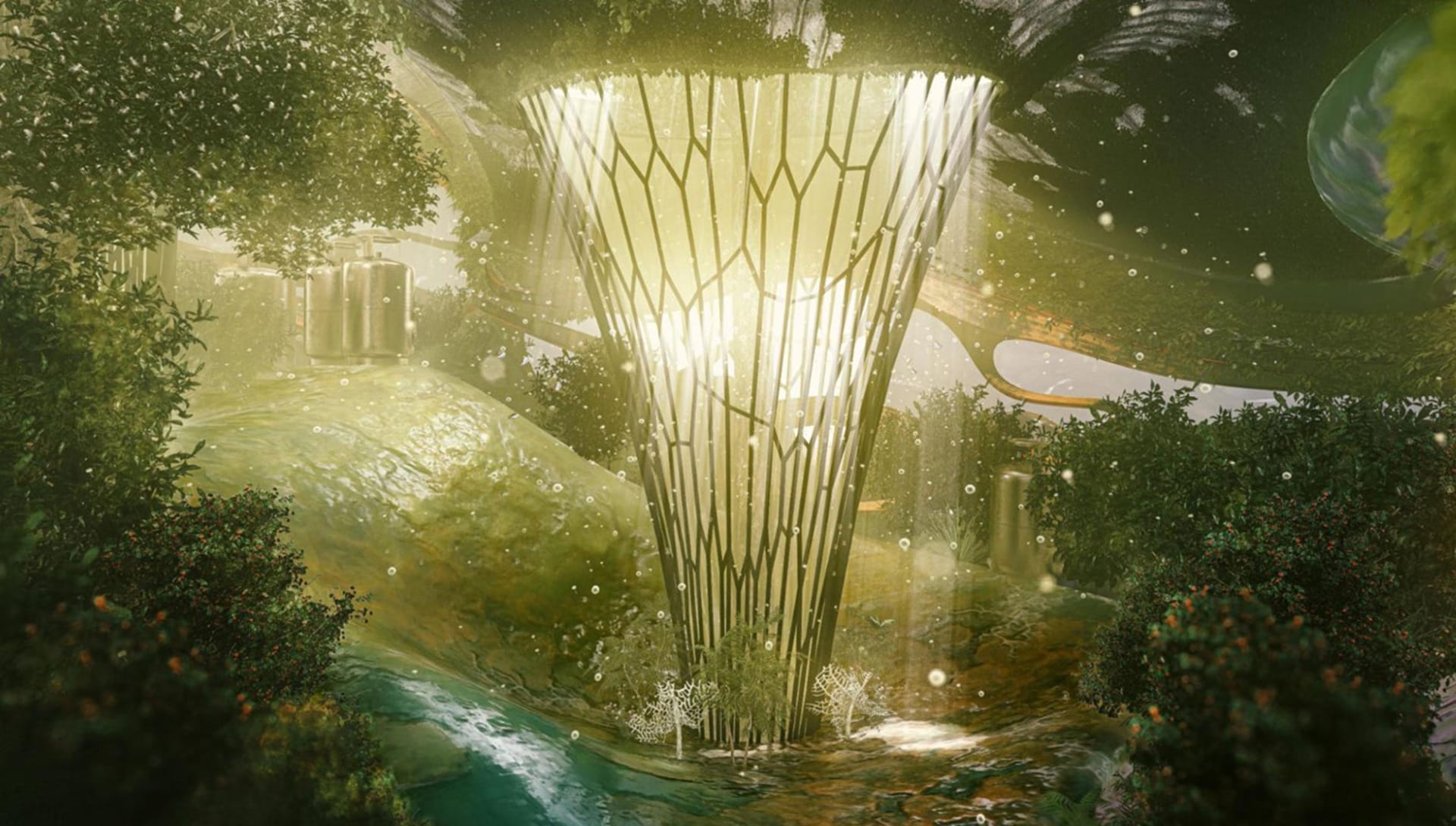
Who lives or occupies this environment?
The space is co-inhabited by the Exuvian scout and the ecosystem he sustains and nurtures within the terrarium. The idea of the space is to grow various fungal biomes and their sustaining species. Life emerges as these naturally grow and host multiple parts of the terrarium.
Can you talk a bit about the different textures and materials?
For the space itself, various noise maps have been combined and blended at different scales to create three levels of detail. These translate both into the diffuse map and the normal map. The normal values are then tweaked and exaggerated to make multiple contrasting occurrences as light is introduced into the scene. The scene is then populated with different plant and algae species. Finally, I used opacity maps to ensure the scene was rich in greenery and optimized for rendering.
What is the function of the central figure in the middle? How did you create it?
The central figure is where most of the light enters the scene. It represents a perfect symbiosis between man and nature. Almost a spiritual experience as the tree grows right from the center. The piece consists of two elements, the organic frame, and the tree. I created the frame element by making a cylindrical column protruding outwards as it reaches the ceiling. The geometries’ topology is then changed to a Voronoi-like pattern. These pattern faces are later inset and deleted, leaving an organic frame structure.
There are a lot of different elements interacting with each other in this piece. How do you decide on their placement in the scene and the overall composition?
The idea was to create a spiritual experience within the terrarium. Where the central piece would orchestrate the surroundings. The composition of the elements is a circular growth starting from the center. As the light spreads from the middle, various plant species start growing as it reaches the darker spaces, the moisture increases; hence the algae growth gets thicker and more intense. Different recognizable human elements, like the high-pressure cylinders, have been placed in the composition giving a sense of human moderation and control over the growth of the environment.

